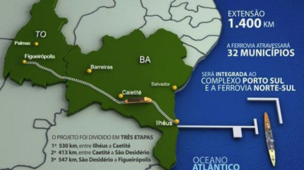Tempo de leitura: 2 minutos
Free trade zones, from the coastal to the inland provinces, have well implemented the major tasks assigned by the central government in the past five years, a report said on Friday.
The first Shanghai FTZ, set up in 2013, has completed 98.99 percent of the tasks-the highest rate, according to the Report on the Development of China Free Trade Zones. The completion rate for the second batch of FTZs in Guangdong province, Tianjin, and Fujian province exceeded 90 percent, the report said.
The Chinese Academy of International Trade and Economic Cooperation, a research body under the Ministry of Commerce, conducted the research.
The report came as the ministry is expected to release two updated foreign investment negative lists-which identify sectors where foreign participation is restricted, by the end of this month.
The two lists, one for nationwide implementation and one for pilot free trade zones, is one of China’s concrete moves to further liberalize market access for foreign investors.
“The common tasks that all FTZs need to perform are categorized into five aspects, including reform of the investment management system, shifting trade development mode, and opening up and innovating financial sectors,” Zhang Wei, vice-president of CAITEC, said.
“They did the best in terms of transforming the government functions. Their progress in opening up and innovating financial sectors was relatively slow, but the average completion rate was close to 80 percent,” she said.
Zhang made the remarks while releasing the findings on the First Forum on China Pilot Free Trade Zone Development in Wuhan, Hubei province.
A total of 12 pilot FTZs have appeared in the country in the past five years. According to the Government Work Report 2019, China will grant greater autonomy to pilot FTZs to carry out reform and innovation this year.
Fang Aiqing, deputy director of the Economic Affairs Committee of the 13th Chinese People’s Political Consultative Conference National Committee, said, to further the development of FTZs, joint efforts are needed in innovating systems, promoting the service sector and widening market access.
FTZs need to serve the grand visions, like the Belt and Road Initiative, and Beijing-Tianjin-Hebei coordinated development, Fang said.
“It is very important for China to show the world that the cost of importing and exporting is going down and the process is being streamlined,” Marcin Piatkowski, senior economist with the World Bank, said.
“China has achieved an amazing success in improving its business environment over the last two years. And we are hopeful that this reform momentum will continue,” he said.
Leia mais






Os comentários foram encerrados, mas trackbacks e pingbacks estão abertos.